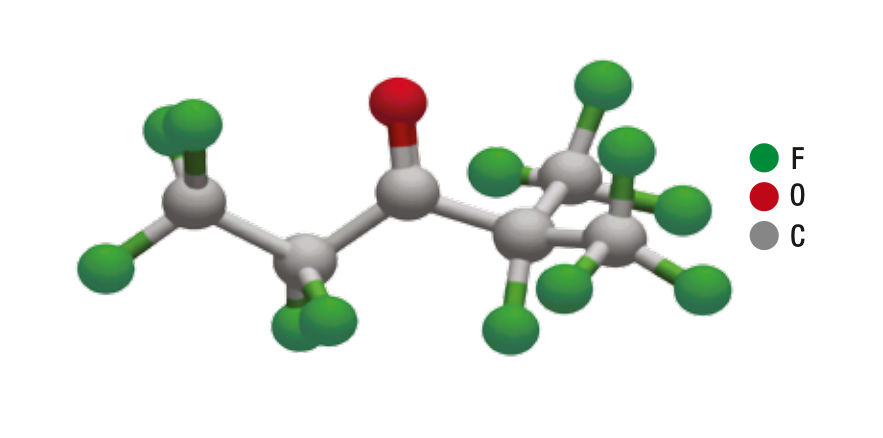How safe is the Novec fire extinguishing agent

AMFE.pro automatic mini fire extinguishers with the new generation Novec fire extinguishing agent are safe both for people and equipment, safe as a long-term investment and also safe for the environment. 3M™ Novec™ engineered fluid has the lowest global warming potential (GWP) and ozone depletion potential (ODP) of all hydrocarbon alternatives.
3M™ Novec™
- Safety for people – no hazard to human health
- Safety for equipment – no damage to materials, no corrosive effects
- Secure investment – even in large-scale installations
- Safe for the environment and ozone layer
In this post, we look closer at the essence of ODP and GWP.
Ozone Depletion Potential (ODP)
ODP is an index that provides a relative measure of the effect a compound has on the stratospheric ozone layer. The halogens bromine and chlorine are known to cause the depletion of the ozone layer. Each atom of these halogens can react with thousands of ozone molecules, collectively contributing to a thinning of the ozone layer.
The halogen fluorine, however, has been shown to not affect the ozone layer. Novec 1230 fluid is a highly fluorinated ketone containing no chlorine or bromine. As a result, the ODP for Novec 1230 fluid is zero, meaning it does not affect stratospheric ozone.
Global Warming Potential (GWP)
GWP is a parameter that provides a relative measure of the possible climate impact due to the presence in the atmosphere of a compound that acts as a greenhouse gas. The two primary characteristics that determine whether a compound will act as a greenhouse gas are the absorption of infrared energy and persistence in the atmosphere.
All organic compounds absorb infrared energy. Compounds that contain carbon-fluorine bonds typically exhibit strong infrared absorption. If these compounds are also atmospherically long-lived, the material will have a high GWP.
What sets Novec 1230 fluid apart from the first generation of halogenated halon alternatives is its extremely short atmospheric lifetime. The previous halon replacements are long-lived in the atmosphere – taking tens, hundreds or even thousands of years to degrade after they are emitted. In contrast, Novec 1230 fluid degrades very rapidly when released to the atmosphere. Exposure to natural sunlight causes this material to break up in a matter of several days.
However, this unique material remains stable in normal storage conditions as a component of a fire protection system.
